Tour of Nepal and Bhutan!!
Namaste!! - We Welcome You With Folded Hands!!
Welcome to our tour, or as we say ‘Atithi Devo Bhava’ (The guest is an incarnation of God). Thank you for giving us the opportunity to serve you!!
Arrival in Kathmandu. Upon arrival, our representative will meet outside the arrival terminal building and transfer to Hotel.
Afternoon, proceed for the tour of Kathmandu Durbar Square and Swoyambhunath Stupa.
Kathmandu Durbar Square: The Kathmandu Durbar Square is famous for its exquisite architecture and artistic embellishment. The complex of palaces, courtyards and temples, built in 1200 to 1768 A.D. used to be the seat of the ancient Malla kings of Kathmandu which epitomizes the religions and cultural life of the people.
Swayambhunath: A top a green hillock west of Kathmandnu, stands the great stupa of Swayambhunath which is considered to be over 2500 years old. It marks the point where the legendary patriarch Manjushri discovered the lotus of the ancient valley lake. Constructed to specific rules each with a symbolic meaning, the stupa of Swayambhunath is a model of its kind.
Overnight at Hotel Radisson
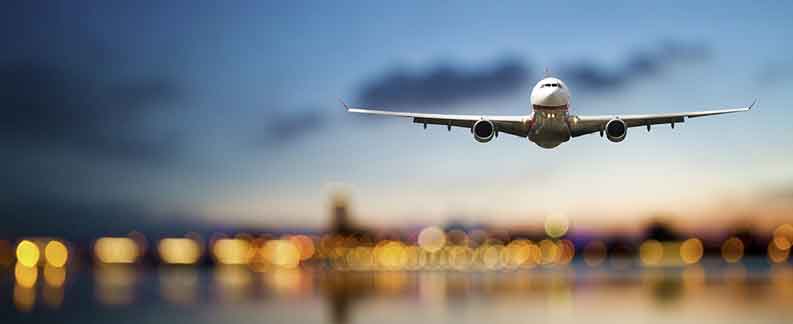
Breakfast is at Hotel.
After breakfast, proceed for the tour of Pashupatinath Temple, Boudhanath Stupa and Patan Durbar Square.
Pashupatinath Temple: Dedicated to Lord Shiva it is one of the most sacred Hindu shrines in the world. It lies 5 km. east of Kathmandu Valleyon the bank of the sacred Bagmati River. Thousands of pilgrims visit this temple every year during Shivaratri, the birthday of Lord Shiva. Entrance to the temple precinct is forbidden to non-Hindus. The Large, gilded triple-roofed temple was built in 1696 A.D. though 300 years earlier this was a structure on this site.
Boudhanath Stupa: This is the largest stupa in Nepal and one of the largest in the world located east of the valley. It was built by the Lichchhavi King Mana Dev in the 5th century A.D. The Rinpoches who reside here have established Boudhnath as one of the most flourishing centres of Tibetan Buddhism in the world. The colossal ancient stupa is 36 metres high.
Patan Durbar Square: The Patan Durbar Square has been acclaimed as one of the finest urban streetscapes in the world. Most of the monuments seen today were built between the 16th – 18th centuries.The Patan Durbar Square has been acclaimed as one of the finest urban streetscapes in the world. It is known as the centre of fine arts and for the superb craftsmanship of its artisans. Essentially a Buddhist city, historic inscriptions establish Patan as an important town as it is said to have been founded by Emperor Ashoka in the 3rd century B.C., although no historical proof exists.
Overnight at Hotel Radisson
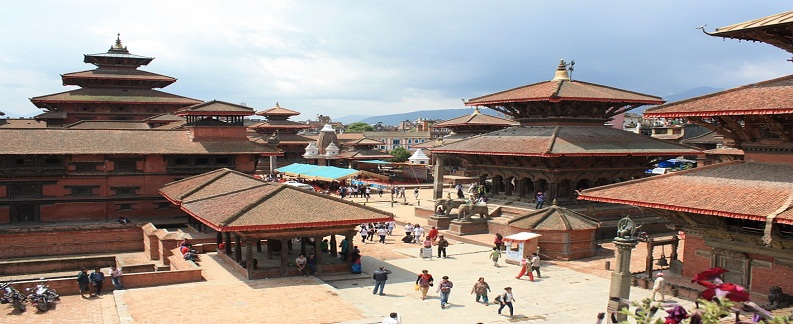
Breakfast is at Hotel.
After breakfast, proceed for the tour of Bhaktapur Durbar Square and excursion to Nagakot.
Bhaktapur Durbar Square: A former capital of the valley, it was once a flourishing city on the trade route to Tibet. It has preserved its traditional character better than the other two cities, due to its more isolated location. It is regarded today as a classic showcase of medieval Nepalese town life. It is situated in the east of Kathmandu valley about 14 km. away. It today retains much of its beauty in ornate woodcarvings and in the famed Golden Gate.
Nagarkot: The tiny settlement of Nagarkot clings to a hill-top east of Kathmandu (2,099 metres, 6,886 feet), far from city noise and traffic. It is 32 km. from the city and is famous for its view of the Himalayan range, stretching from Dhaulagiri in the west and Everest to Kanchenjunga in the east. It is the best close range Himalayan vantage point from anywhere on the Kathmandu valley rim.
Overnight at Hotel Radisson
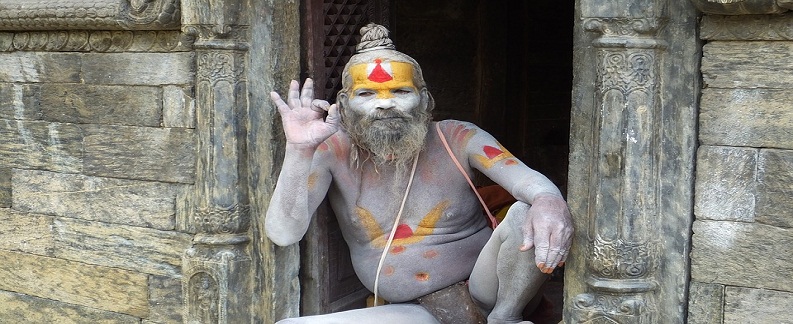
Breakfast is at Resort.
After breakfast, transfer to airport to connect the flight to Pokhara by Buddha Air (U4 607) at 0845 hrs. Upon arrival, our representative will meet, assist and transfer to hotel.
POKHARA
If Kathmandu is the cultural hub of Nepal, Pokhara is its centre of adventure. An enchanting city nestled beneath the snow-crested Annapurna Massif in a tranquil valley. It is the starting point for many of Nepal’s most popular trekking destinations. Pokhara is a place of remarkable natural beauty. The serenity of Phewa Lake and the magnificence of the fishtailed summit of Machhapuchhre (6,977m) rising behind it create an ambience of peace and magic.
Afternoon, boating on Phewa Lake and Visit Peace Pagoda.
A Peace Pagoda is a Buddhist stupa designed to provide a focus for people of all races and creeds, and to help unite them in their search for world peace. Most (though not all) have been built under the guidance of Nichidatsu Fujii (1885-1985), a Buddhist monk from Japan and founder of the Nipponzan-Myōhōji Buddhist Order. Fuji was greatly inspired by his meeting with Mahatma Gandhi in 1931 and decided to devote his life to promoting non-violence. In 1947, he began constructing Peace Pagodas as shrines to World peace.
Overnight at Temple Tree Resort
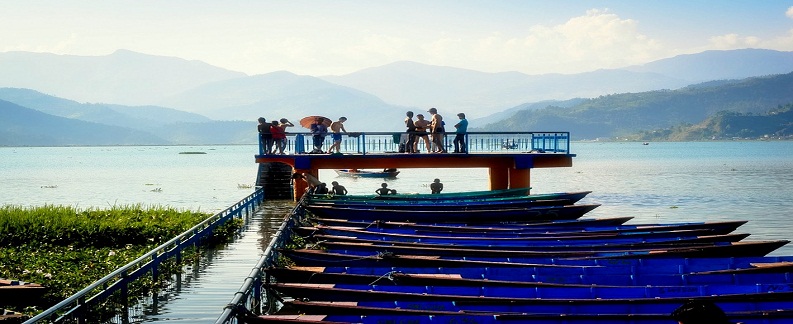
Early morning,we will proceed on an excursion to Sarankot (to view the Himalayas close-up). Clearly however, the most stunning of Pokhara’s sights is the world famous views of the Himalayas, especially with the spectacular panorama of the Annapurna range which forms its backdrop. Stretching from east to west, the Annapurna massif includes Annapurna I to IV and Annapurna South. Although the highest among them is Annapurna I (8,091m), it is Machhapuchhre which dominates all others in this neighbourhood.
Return to hotel for breakfast.
In the afternoon, tour of Pokhara city that includes the visits to Davis Fall, Seti Gorge, Bindhyabasi Temple, Old Bazaar, the Tibetan Refugee Camp etc.
Overnight at Temple Tree Resort
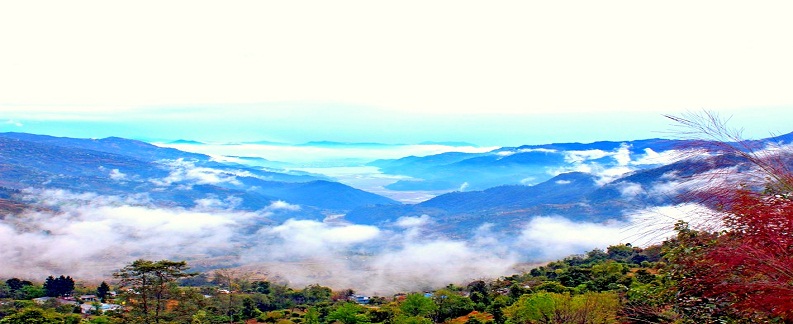
Breakfast is at Hotel.
After breakfast, transfer to airport to port to connect the flight to Kathmandu by Buddha Air (U4 608) at 0945 hrs. Upon arrival at 0900 hrs, our representative will meet outside the arrival terminal building and transfer to hotel.
Afternoon, proceed for the tour of Kirtipur.
Kirtipur: The small town of Kirtipur is on a hill, 5km southwest of Kathmandu. In the past there were 12 gates of the town. Parts of the old city wall still remain. The main industry in town is the Kirtipur Cottage Industry Centre and most of the residents are either weavers or farmers. There are some great views of Kathmandu and the mountains behind it. Kirtipur is on two hills and the saddle between the hills. With its easily defendable hilltop location, when Prithvi Narayan Shah attacked the valley in 1768, Kirtipur was the first place to be attacked. After a tough siege, the town was taken. The king being angry at the resistance order that all the male residents of the town have their lips and nose cut off, but those who could play wind instruments were spared. It is said that news of this punishment spread across the valley and resistant was weakened elsewhere across the valley.
Overnight at Hotel Radisson
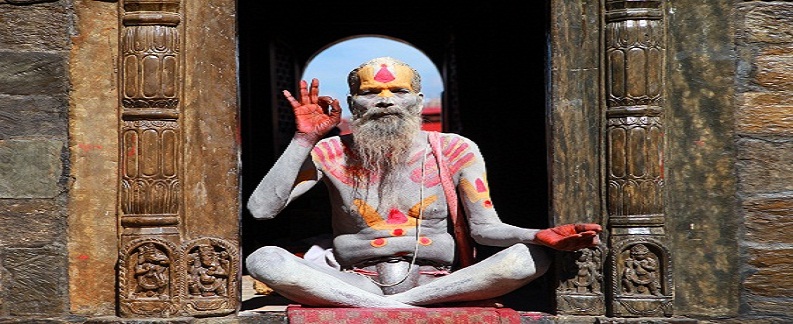
Breakfast is at hotel.
After breakfast, transfer to airport to connect onward flight. Upon arrival, our Bhutan representative who will assist you in boarding your vehicle for transfer to Thimphu (2320Mts / 7656Fts, 65 Kms / 01½ to 02 Hrs), Thimphu is the capital town of Bhutan and the centre of government, religion and commerce, Thimphu is a unique city with unusual mixture of modern development alongside ancient traditions. Although not what one expects from a capital city, Thimphu is still a fitting and lively place. Home to civil servants, expatriates and monk body, Thimphu maintains a strong national character in its architectural style. On arrival in Thimphu, Check in to the hotel. Evening is free at leisure.
Dinner is at hotel.
Overnight at Hotel Le Meridian
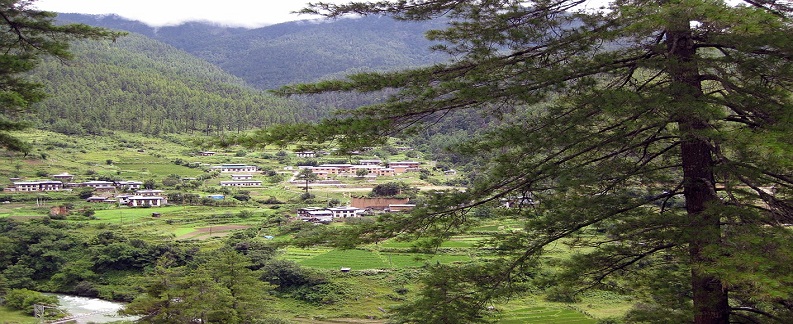
After breakfasts go for Thimphu sightseeing covering – Memorial Chorten - The Chorten was built in 1974 to honor the 3rd King of Bhutan, Jigme Dorji Wangchuck (1928–1972), is a prominent landmark in the city with its Golden Spires and Bells. In 2008, it underwent extensive renovation. It is popularly known as "the most visible religious landmark in Bhutan". Tashichho Dzong (All tourists visiting Dzongs and temples must be dressed appropriately. No half pant, sleeve less shirts, floaters, etc are allowed) –Also known as "Fortress of the Glorious Religion", Trachichho Dzong, Thimphu was initially built in 1641 and later rebuilt in its present form by King Jigme Dorji Wangchuk in 1965. The Dzong houses, Main Secretariat Building which houses the Throne room of His Majesty, the King of Bhutan. The National Assembly Hall is housed in a modern building on the other side of the river from the Dzong. During the warmer summer months, the monk body headed by His Holiness, the Je Khenpo, makes its home in the Dzong. Kuensel Phodrang (Buddha Point) - You can pay your obeisance and offer prayers to the Buddha, the Largest Statue in the country and then walk around and take a glimpse of the valley, Changangkha Lhakhang (Monastery) (All tourists visiting Dzongs and temples must be dressed appropriately. No half pant, sleeve less shirts, floaters, etc are allowed) - This popular fortress-like temple perched on a ridge above central Thimphu regularly hums with pilgrim activity. It was established in the 12th century on a site chosen by Lama Phajo Drukgom Shigpo, who came from Ralung in Tibet. Parents traditionally come here to get auspicious names for their newborns or blessings for their young children from the protector deity Tamdrin (to the left in the grilled inner sanctum, next to Chenresig). Don't leave without taking in the excellent view from the back Kora (Pilgrim path), with its lovely Black and Gold prayer wheels. Then visit the new Drupthob Goemba / Zilukha Nunnery - Perched on a promontory, overlooking picturesque Trashichho Dzong and Golf course, it is the only nunnery in capital known as Zilukha Anim Dratsang, once belonged to the Drubthob (Realized one) Thang Thong Gyalpo often referred to as The King of the open field (In the early 15th century with his multiple talents he popularly became the Leonardo da Vinci of the Great Himalayas). You may interact here with some of the nuns who have devoted their life to spirituality and Buddhism. National library (Closed on Saturday, Sunday & National Holidays) – is a major scriptural repository and research facility dedicated to the preservation and promotion of the rich literary, cultural and religious heritage of Bhutan. The scripture and document collection held in our library and archives is a national treasure and a fundamental source for Bhutanese History, Religion, Medicine, Arts and Culture. Later visit the Indigenous hospital where traditional art of healing is still practiced, Institute for Zorig Chusum (Traditional Art & Craft School) (Closed on Saturday, Sunday & National Holidays & During Summer & Winter Vacations) - The art taught today in Bhutan was introduced by the Great Treasurer Discoverer Terton Pema Lingpa in the Fifteen century. These traditional Crafts represents hundreds of years of Knowledge and ability that has passed down the generation. Bhutan unique artistic traditions have played a vital role in mounding its distinct cultural heritage. This tradition is best reflected in the “Zorig Chusum” or thirteen
Dinner is at hotel.
Overnight at Hotel Le Meridian
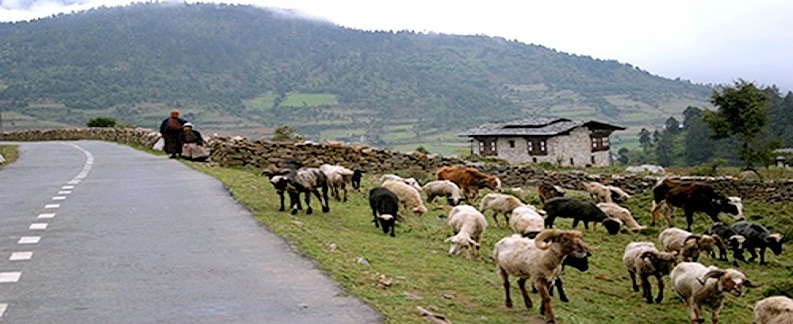
After breakfast drive to Punakha (1200Mts / 3936Fts, 77 Kms / 03 to 3½ Hrs) / Wangdi (Wangdiphodrang) (1350Mts / 4430Fts, 70 Kms / 03 to 3½ Hrs). Punakha / Wangdi is the last town on the highway before entering Central Bhutan. The drive is over Dochu La pass (3080Mts / 10102Fts) which is very scenic with fascinating view of mountains of Bhutan. Stopping briefly here to take in the view and admire the Chorten, Mani wall, and Prayer flags which decorate the highest point on the road. If skies are clear, the following peaks can be seen from this Pass (Left to Right): Mt. Masagang (7,158Mts / 23478Fts), Mt. Tsendagang (6,960Mts / 22829Fts), Mt. Terigang (7,060Mts / 23157Fts), Mt. Jejegangphugang (7,158Mts / 23478Fts), Mt. Kangphugang (7,170Mts / 23518Fts), Mt. Zongphugang (7,060Mts / 23157Fts), a table mountain that dominates the isolated region of Lunana - Finally Mt.Gangkar Puensum (7,497Mts / 24590Fts), the highest peak in Bhutan. Visit Punakha Dzong (Which is closed in Winter months when the monk body are in Punakha. All visits to Punakha Dzong & Monastery are limited till Courtyard only. All tourists visiting Dzongs and temples must be dressed appropriately. No half pant, sleeve less shirts, floaters, etc are allowed) - Built Strategically at the junction of Pho Chhu (Father) and Mo Chhu (Mother) rivers in 1637, by Shabdrung Ngawang Namgyal to serve as the religious and administrative centre of the region, Punakha Dzong has played an important role in Bhutan's history. Damaged by Four catastrophic fires and an earthquake, the Dzong has been fully restored by the present King. The Dzong is open for visitors during Punakha Festival and in summer months when the monk body moves to Thimphu. Chimi Lhakhang (All tourists visiting Dzongs and temples must be dressed appropriately. No half pant, sleeve less shirts, floaters, etc are allowed) - situated on a hillock in the centre of the valley, is dedicated to Lama Drukpa Kuenley, who in the late 15th century used humor, songs and outrageous behavior to dramatize his teachings and due to this also known as "Divine Madman". This temple is also known as the temple of fertility. It is widely believed that couples who do not have children and wanting one, if they pray at this temple, they are usually blessed with a child very soon. It is about 30 minute walk across field from the road to the temple. The trail leads across rice fields to the tiny settlement of Pana, meaning "field". It then follows a tiny stream downhill to Yoaka and across more fields before making a short climb to Chimi Lhakhang.
Dinner is at hotel.
Overnight at Dhensa Resort
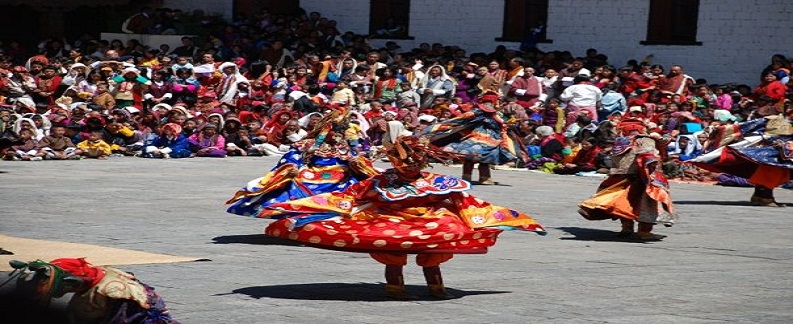
Today the day start early for full day excursion to Gangtey & Phobjikha Valley (3000Mts / 9845fts , 85Kms / 3 to 3½ Hrs One way ) The valley of Gangtey is one of the most beautiful spots in Bhutan. The surprise of finding such a wide, flat valley without any trees after the hard climb through dense forests is augmented by an impression of vast space, and extremely rare experience in Bhutan where most of the valley’s are tightly enclosed. A few kilometers beyond the Gangtey Monastery, on the valley floor lie’s the village of Phobjikha. This place is the winter home of black necked cranes that migrate from the arid plains in the north to pass winter in milder and lower climate. Phobjikha, at an altitude of 2900 m, falls under the district of Wangdiphodrang and lies on the periphery of the Black Mountain National Park. The valley boasts two beautiful meandering rivers, Nakay Chhu (Chhu Naap-black water) and Gay Chhu (Chhu Karp-white water). According to a local legend, the two rivers actually represent a snake and a boar. The two animals once raced each other with an agreement that if the snake (Nakay Chhu) won, Phobjikha valley would be able to grow rice, but if the boar won, then rice could never be cultivated in the area. The snake lost since it had to meander all the way during its journey. Rice cannot be cultivated in the valley even today. Black Necked Crane Information Centre (Closed on Saturday, Sunday & National Holidays)- Situated on the edge of the forest and wetland along the main road of Phobjikha valley, the black-necked crane information Centre has an observation room equipped with high power telescope and spotting scopes for catching the best view of the cranes. The centre also offers display information that outline the natural and cultural history of the area. There is a small gift shop, which sells handicrafts produced by the local people. Gangtey Goempa (All tourists visiting Dzongs and temples must be dressed appropriately. No half pant, sleeve less shirts, floaters, etc are allowed) -Perched on a small hill that rises from the valley floor, the Gangtey Monastery is the only Nyingmapa monastery on the western side of the Black Mountain’s Gangtey valley, Bhutan and also the biggest Nyingmapa monastery in Bhutan. The Monastery is surrounded by a large village inhabited mainly by the families of the 140 Gomchens who take care of the Monastery. Gangtey was founded by Pema Trinley, the grandson of Pema Lingpa, the famous Nyingmapa saint of Bhutan. In 1613, Pema Trinley establishes the monastery and became the first Gangtey Tulku. The religious traditions of Pema Lingpa still taught there. The second Tulku, Tenzin Legpa Dondrup (1645 to 1726), enhanced the size of Gangtey while keeping up good relations with Drukpas, and rebuilt the monastery in the form of a Dzong. Back to the hotel
Overnight at Dhensa Resort
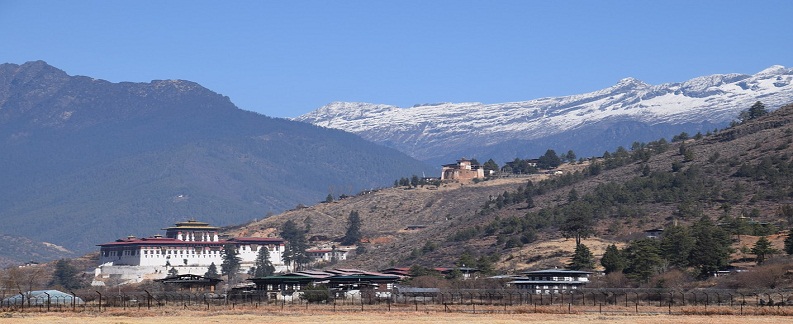
After breakfast, drive to Paro (2134Mts / 7000Fts, 135 Kms / 05 Hrs). On arrival Paro, check in to the hotel.
Afternoon, visit Rinpung Dzong (All tourists visiting Dzongs and temples must be dressed appropriately. No half pant, sleeve less shirts, floaters, etc are allowed) - Built in 1646 by Shabdrung Ngawang Namgyal, the First spiritual and temporal ruler of Bhutan, the Dzong houses the monastic body of Paro, the office of the Dzongda (district administrative head) and Thrimpon (judge) of Paro district. The approach to the Dzong is through a traditional covered bridge called Nemi Zam. A walk through the bridge, over a stone inlaid path, offers a good view of the architectural wonder of the Dzong as well as life around it. It is also the venue of Paro Tshechu, held once a year in the spring. Walk further down crossing the traditional bridge into Paro Town. Later visit Kyichu Lhakhang (All tourists visiting Dzongs and temples must be dressed appropriately. No half pant, sleeve less shirts, floaters, etc are allowed) - It is one of the oldest and most sacred shrines of the Kingdom dating back to 7th century (the other is Jambey Lhakhang in Bumthang). The Lhakhang complex is composed of two temples. The first temple was built by Tibetan King, Songtsen Gampo in the 7th century and in 1968, H.M. Ashi Kesang, the Queen Mother of Bhutan, built the second temple in original pattern, this is a popular monastery for wedding blessing among our travellers.
Dinner is at hotel.
Overnight at Hotel Le Meridian
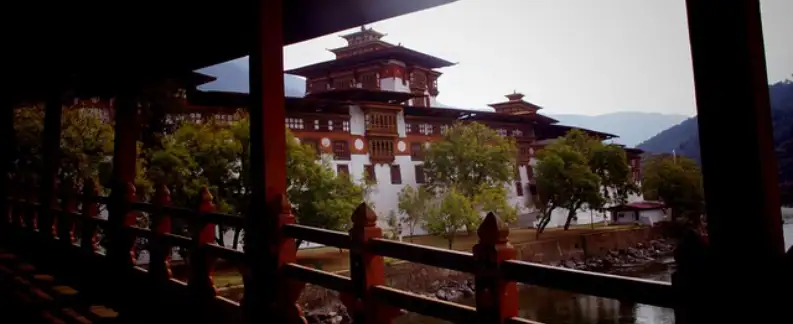
Start the day early for a day hike to Taktsang Lhakhang (Tiger's Nest) (All tourists visiting Dzongs and temples must be dressed appropriately. No half pant, sleeve less shirts, floaters, etc are allowed) with packed or early breakfast - The hike which is all the way uphill takes about 2½ hrs to 3Hrs one way through pine forests. The monastery clings to a huge granite cliff 900 meters from the Paro valley. It is one of the most famous of Bhutan's monasteries. It is said that Guru Rinpoche arrived here on the back of a tigress and meditated at this monastery and hence it is called "Tiger's Nest". This site has been recognized as a most sacred place and visited by Shabdrung Ngawang Namgyal in 1646 and now visited by all Bhutanese at least once in their lifetime. On 19 April, 1998, a fire severely damaged the main structure of building but now this Bhutanese jewel has been restored to its original splendour. Guest can also opt for Ponies on direct payment basis but for guest who are unable to make it to the top even reaching to the cafeteria area which in almost half way is very fulfilling. Back to the Paro hotel. Afternoon / Evening free Yoga session.
Dinner is at Hotel.
Overnight at Hotel Le Meridian
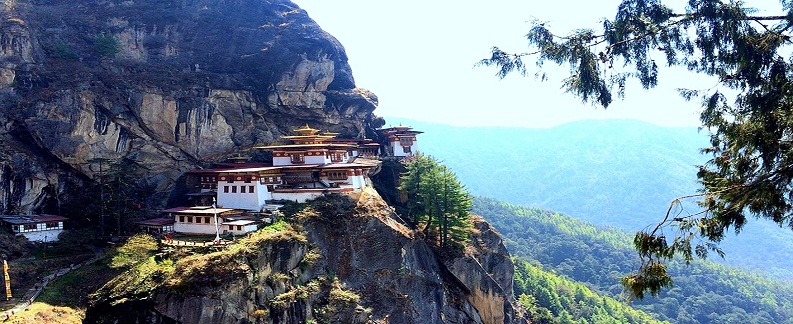
Copyright © 2016 - 2023, Trinetra Tours Pvt Ltd. Powered By DigiLantern

